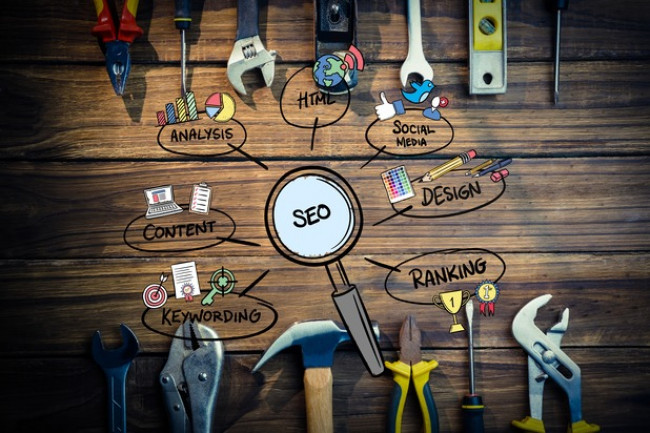As companies recover from the two years of pandemic, they are making the maximum efforts to have an edge and gain competitive advantage. Gone are the days when being digital was considered revolutionary for a business, now it is just a standard. To get on top, businesses today need more, which is why there has been a keen interest in data analytics, especially by retail businesses. While it can come as a surprise to most people, data analysis tools are in heavy demand by the retail sector specifically the convenient store segment.
The ability to act on data-driven insights is more important today than it was ever in the past. The past years spent in quarantine has made it utmost critical that retail businesses keep up with data analytics as most companies have made a shift from semi-digital to being fully digital. This is not a short term or temporary shift but rather a more permanent one. Moreover, this digital shift and use of data- driven insights has also completely changed the business environment.
By gathering data through data analytics algorithm, retail businesses are accelerating their digital transformation and consequently improving revenue and business growth. The incorporation of data analytics helps retail businesses in assisting customer relations, boosting brand recognition. With the help of the data support, businesses are able to deal with their customers better, understand their needs and provide ultimate customer satisfaction.
While most companies were changing data patterns even before the pandemic, this accelerated afterwards. They rapidly invested in the new way of communicating, so what happened during the pandemic that triggered retail businesses to invest in data analytics, after all?
Retail Businesses during the Pandemic
During the pandemic, when physical contact was out of question, the authorities came up with a lot of smart solution for many problems. There were new cases of using data, for example, many retail business as well as the government created COVID-19 dashboards that contained crucial data which helped them make important business decisions. Businesses began offering pandemic related and data-driven insights to the customers as well, which turned out to be a smart business decision as it provided customers visibility of the supply chains.
When the global pandemic hit, retail businesses all around the world started operating differently than how they used to. Businesses that already used a data analytic algorithm were ahead of others very quickly. These retail businesses had access to their customers’ buying journeys, website analytics and properly modeled KPI dashboards allowing them to adapt better to the changing customer demands and giving them an edge in the tough time. This is what pushed others to accelerate quickly towards data science and analytics solutions. The pandemic taught retail business owners, very quickly, the importance of gathering data and using it for their benefit.
Retailer, with the help of data science solutions, are designing new go-to-market plans that are more successful at engaging customers. To understand the importance of data analytics better, we first need to familiarize ourselves with the data analysis techniques that are most commonly used by retail businesses.
5 Key Types of Data Analysis Techniques
Essentially, all retail businesses carry out some form of data analysis. While some just review Excel sheets, other use specially designed data analytics algorithms to gather custom web portal development. There is obviously a difference in the results from the use of both. Let’s look at the four main types of data analytics that retail business use.
Descriptive Analysis
This is the most common type of data analytics. It helps a business to organize their data in a way that it tells a story. This technique gathers data from different sources to generate valuable app developer games. To put it simply; it tells you what is happening in your business. However, it does not really give a reason for why something is happening.
Diagnostic Analysis
As descriptive analysis tells a retailer about what is happening is a business, diagnosis analysis tells them why it is happening. It can also be used to find out anomalies and flag problems as they happen. It does so by using statistical analysis, algorithms and machine learning to dig deeper into the data and find out answers.
Predictive Analysis
Predictive analysis tells a retailer what is next for his/her business. By analyzing clusters and expectations, this analytic tool predicts future trends. It is one of the more advanced diagnostic tools in the market today.
Perspective Analysis
This is the most advance type of data analytics tool. As the pervious discussed tool helps retailers understand what is happening, why it is happening and what will happen next, this tool helps them in understanding what they should do next. This can often be a difficult decision as there are infinite number of possible directions a retailer can go in. To make a good recommendation, the perspective tool takes multiples approaches to reach the best, most reliable results. These include:
· Running simulations of finite numbers of different initial conditions and choosing the condition that generates the highest profit.
· Using AI algorithms that are specifically built for retail businesses and lead to best possible outcomes.
· Teaching a machine learning systems that identify different patterns and cluster of actions that lead to the most beneficial outcomes.
Through these data analysis tools, retailers have been successfully making a huge difference in their profits and overall consumer experience. They do this by:
· Understanding the value of the products and the number of it sold in an average order
· Identifying which products sells more, which sells the least and the in-between statistics
· Recognizing the most valuable customers
· Establishing an optimal price point for a product at a specific location
· Identifying what true demand was
Now that we have established how data science and analytic solutions work, let’s look at its benefits for the retail industry and why you should up your investments.
Benefits of Advanced Data Analytics to Retail Businesses
The use of data analytics in the retail industry has a promising future.
Targeted Communication to Customers
With the help of game app development available at every stage of the buying process, retail businesses can communicate more specifically to their customers. Data analytics algorithms capture the past purchases of the customers and improves personalized communication making it more effective than traditional marketing.
Improved Customer Experience
As data analytics help retailers cater to each customer separately and give personalized attention to them, it ultimately causes them to become more loyal and strengthen their relationship with the company. For instance if a customer buys a burger, the data analytics algorithm will suggest them to buy a soft drink and fries with it. This in turn makes the customer happy and increases sales.
Price Optimization
As discussed above, predictive analysis helps retailers understand what is next in the business. This means they can determine the rise and fall of demand. It is through this tool that business have realized that when the prices of a product slightly decreases (while the demand is low), the demand will eventually increase again.
Profitable Store Location
Data analytics allow retailers to find the most profiting locations where people spend most of their time. With the help of the data-driven insights, they can find out the areas where operating an outlet will highly benefit them. Moreover, you can also find out the demographics which further helps.
Market Trend Forecasting
Brands often follow trends on the market because they prove to be profitable. Software companies like Cmolds design data analytics algorithms that analyze the market’s attitude, helping retail businesses to adjust themselves accordingly.
Increased Return on Investment (ROI)
Every business need a high ROI. Retail businesses can uncover higher ROI with the use of data analytics. Tools like predictive analysis allow retailers to assess customers’ response to marketing campaigns and their likeliness of making a purchase.
Demand Predication and Inventory Management
Retail businesses that use data science solutions understand their customers better. They can emphasize on product categories that their customers need more and that the data shows, have a greater demand. By smartly using the data from these data analytics tool, it becomes easier for retail businesses to manage inventory.
Customer Loyalty
app development agency helps retailers focus on each one of their customers. A lot of times there are customers that are not engaging for a long time, however they can be potential long-term customers. By identifying them and designing customized offers for them, retailers can attract them into purchasing something.
Strategic Decision Making
Ultimately, companies depend on the data provided by these advanced data analytics tools to make smart and informed decisions as they are highly reliable and trusted. This means they do not have to hire additional people to this work ultimately saving money in that area.
In today’s fast-paced and advanced world, not using data analytics will cause a retail business to miss the amazing benefits listed above, but chances are that they will gradually lose customers, too. Customers expect a lot from businesses today and it is important that retailers fulfill these expectation if they wish to survive in this cut-throat industry. We would definitely recommend you to up your investments in the advanced data analytics so that you can see the difference in your retail business for yourself!
















